Introduction
Canon EF-S 24mm f/2.8 STM Scores: On the podium for EF-S mount prime lenses
With overall DxOMark Scores ranging from 13 tested on the on EOS 350D to its highest score of 19 tested on the EOS 70D, the EF-S 24mm f/2.8 STM ranks in the lower half of the performance spectrum compared to all lenses in our database. That’s not surprising, given its diminutive design, however, and its best sharpness score of 12 P-Mpix, again tested on the EOS 70D, is only 3P-Mpix off the sharpest EF-S mount lens tested, the Sigma 18-35mm f/1.8 (15 P-Mpix). In fact, the EF-S 24mm ranks third for all EF-S prime lenses, and its best score of 19 is only two points behind the first-place Sigma 30mm f/1.4 Canon (21 points).
Compare these two primes a little more closely and you can see that for Sharpness, the EF-S 24mm and Sigma 30mm primes achieve the same overall Lens Metric Score of 12 P-Mpix. The sharpness field maps at aperture settings between f/2.8 – f/5.6 actually show the EF-S 24mm prime as a little more homogenous across the frame, but the Sigma 30mm offers slightly better results for Vignetting and Chromatic Aberration. What’s more, with over 1 T-stop better Transmission and a wider f/1.4 maximum aperture, the Sigma 30mm is better-equipped for low-light shooting too, but with a price tag of $499, it’s notably more expensive, not to mention bigger and heavier than the Canon pancake option.
For best Sharpness on an EF-S lens at 24mm, the Sigma 18-35mm f/1.8 DC wide-angle zoom surprisingly trumps both of these primes, offering homogenous resolution at all aperture settings and excellent sharpness between f/1.8 – f/8. Again, the 18-35mm’s superior Transmission of 1.8 T-stops compared to 3 T-stops for the EF-S 24mm will help in low-light, enabling the use of lower ISO sensitivities for better-quality video capture. Both Sigma lenses are also fitted with the Japanese manufacturer’s HSM autofocus motor for quick and quiet AF, although this motor is primarily designed for phase detection autofocus operation, and not the contrast detection systems used during video capture.
If you’re looking specifically for a 24mm prime, then there are a couple of options from the Canon EF range which, although designed for full-frame sensors, will work on APS-C cameras, too. Again tested on the EOS 70D, the cheaper EF-S 24mm prime holds its own against the more expensive $549 EF 24mm f/2.8 IS USM prime, with an overall DxOmark Score of 19 for the EF-S lens against 20 for the full-frame option.
Both lenses will provide an equivalent 38mm focal length, taking into account the 1.6x crop factor on Canon APS-C sensors, and the EF option comes fitted with Canon’s Image Stabilization and USM autofocus motor. As with Sigma’s HSM autofocus motor, however, Canon’s USM motor is designed more specifically for still photography and fast operation with a phase detection autofocus system, as opposed to the EF-S 24mm’s newer STM step motor for shooting video.
Individual Lens Metric Scores between these two 24mm primes are pretty close, too, with the more expensive EF option just having the edge in all categories except for Transmission. The EF 24mm just barely gets the nod for Sharpness, scoring 13 P-Mpix compared to 12 P-Mpix for the EF-S alternative, but closer analysis of the sharpness field maps shows that although the EF version is slightly better at wider apertures, it isn’t quite as homogenous as the EF-S at smaller apertures. Results from the older non-IS / USM EF 24mm version are in the same ballpark, too, and although this lens is no longer available at photo retail stores, if you can pick one up at a good price second-hand, and can live without the extra features, it’s a good lens optically.
Canon EF-S 24mm f/2.8 STM vs Canon zooms: The pancake prime still has the edge
The EF-S 24mm prime also offers a notable step up in image quality compared to the standard 18-55mm Canon kit lenses, if you’re looking for a lightweight second lens option. Despite marginally worse overall results for Distortion, Vignetting, and Chromatic Aberration, the EF-S 24mm prime takes full honors for Sharpness with a Lens Metric Score of 11 P-Mpix compared to 8 P-Mpix for both versions of Canon’s 18-55mm standard zoom. Transmission is significantly improved, too, around 2 T-stops better than the kit lenses, making it a better option for low-light shooting. At 24mm, using the maximum apertures of f/2.8 on the EF-S 24mm or f/4 on the zooms, the EF-S 24mm prime is sharper at the center; stop down the EF-S 24mm to f/5.6, and resolution is homogenous across the frame, which is something the kit lenses can’t deliver.
Up against Canon’s flagship EF-S 17-55mm f/2.8 IS USM standard zoom, the smaller prime again comes out on top with an overall DxOMark Score of 19 compared to 16. Overall Sharpness scores of 11 P-Mpix for the zoom against 12 P-Mpix for the prime, again give the EF-S 24mm the edge overall, and at wide-angle focal lengths of 24mm / 28mm, with the aperture wide open at f/2.8, the EF-S 24mm displays better edge resolution. Neither lens offers homogenous sharpness at f/2.8, but close down the aperture to f/5.6 and both are sharp across the frame. The opposite is true for Vignetting, however, where at wide-angle lengths with the aperture wide open at f/2.8 the zoom copes better, but by f/5.6, both lenses are the same.
Although there’s not much in it for overall Distortion, the profile grid at 24mm indicates that the EF-S 17-55mm distorts less at 24mm than the EF-S 24mm prime. The 17-55mm f/2.8 also has the advantage of Image Stabilization for handheld shooting, and features Canon’s USM autofocus motor as opposed to a step motor for video.
Both the EF-S 24mm prime and EF-S 17-55mm f/2.8 zoom are a cut above the Canon EF-S 18-200mm superzoom at 24mm, however. Covering such a large focal range in a relatively lightweight and affordable unit, the optical performance suffers notably at 24mm. The 18-200mm has relatively poor sharpness at its maximum f/4 aperture and doesn’t offer homogenous sharpness at any aperture settings. Its Transmission score of 5.4 T-stops compared to 3 T-stops for the EF-S 24mm indicates the relatively weak volume of light transmitted by the 18-200mm, too, which will make the viewfinder image dark and require the use of higher ISO settings to achieve faster shutter speeds.
To sum up, for $149, the EF-S 24mm f/2.8 STM pancake lens is a good option either for shooting video (thanks to its step motor) or for still photographers who want to travel light. For the size and price, optically it’s pretty good and certainly delivers better results than a basic kit lens at 24mm, as well as letting through much more light. It holds it own against more expensive Canon EF or Sigma prime lenses, too, and although it’s true that some options such as the Sigma 18-35mm or EF 24mm IS USM do offer slightly better Sharpness and Transmission, there’s really not that much difference.


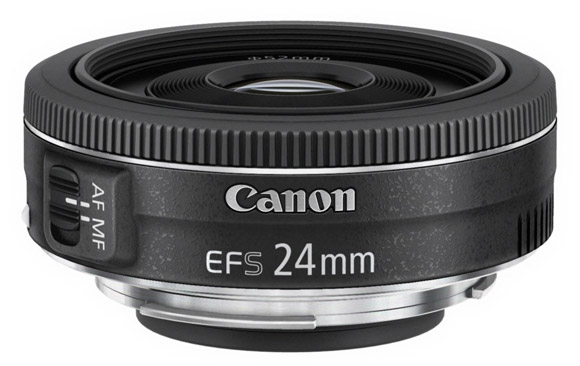



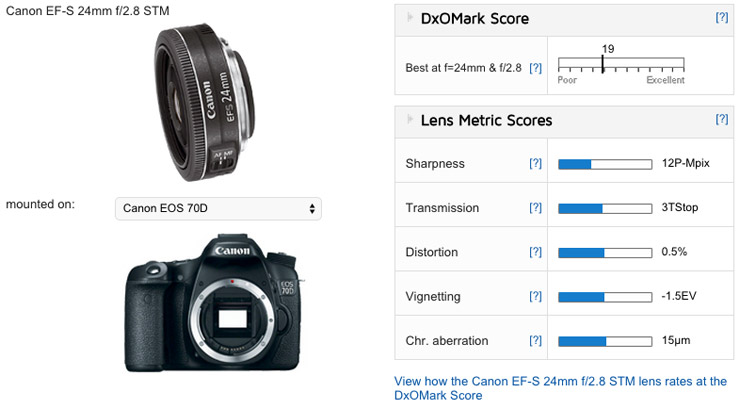
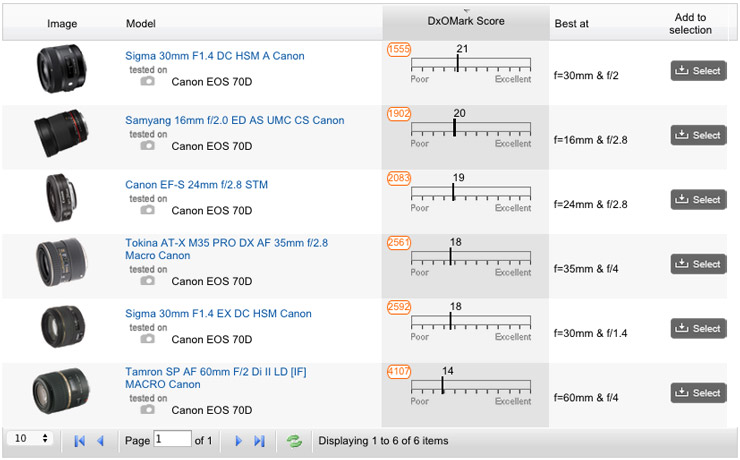
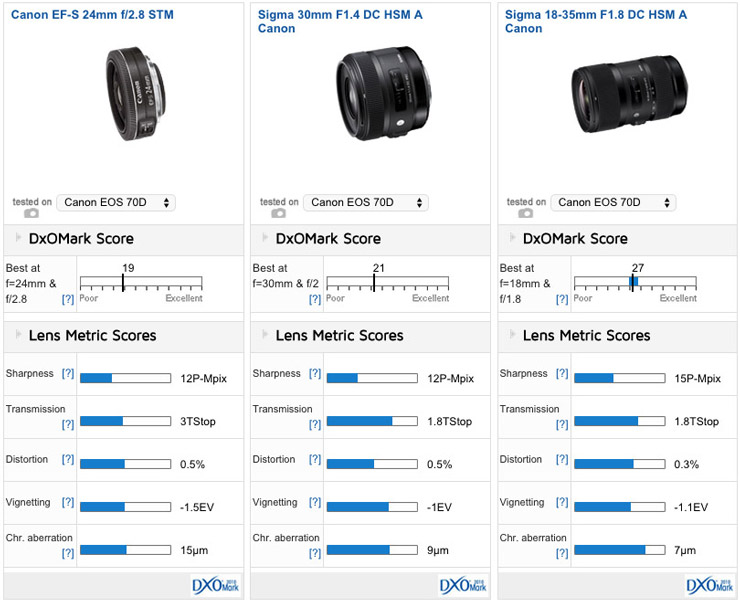
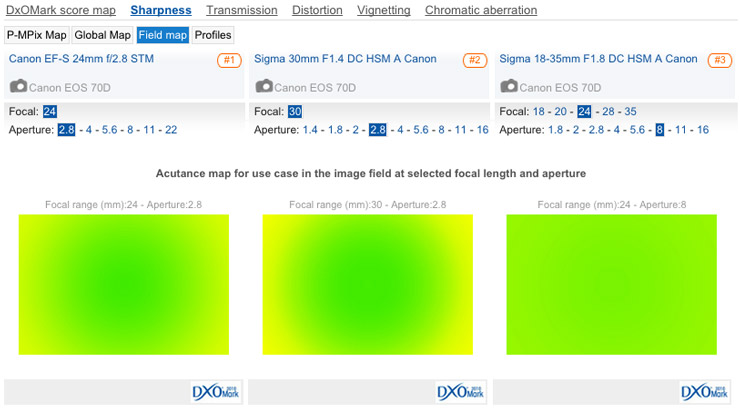
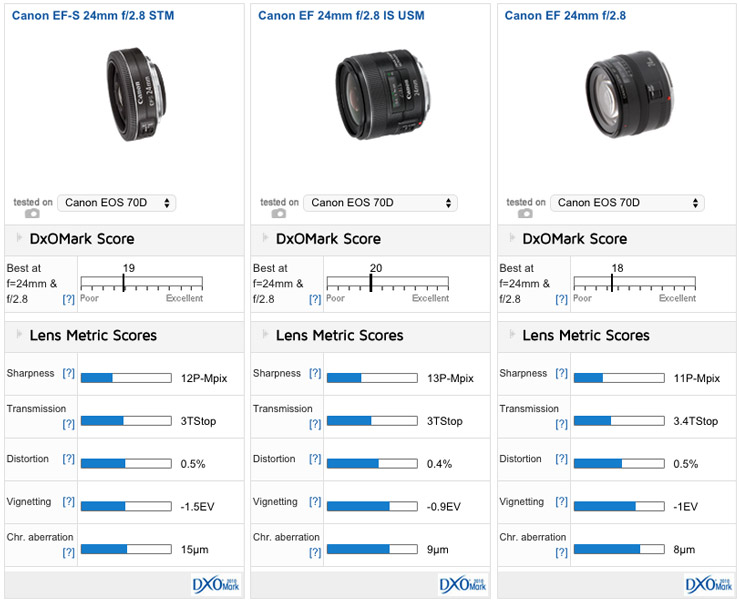
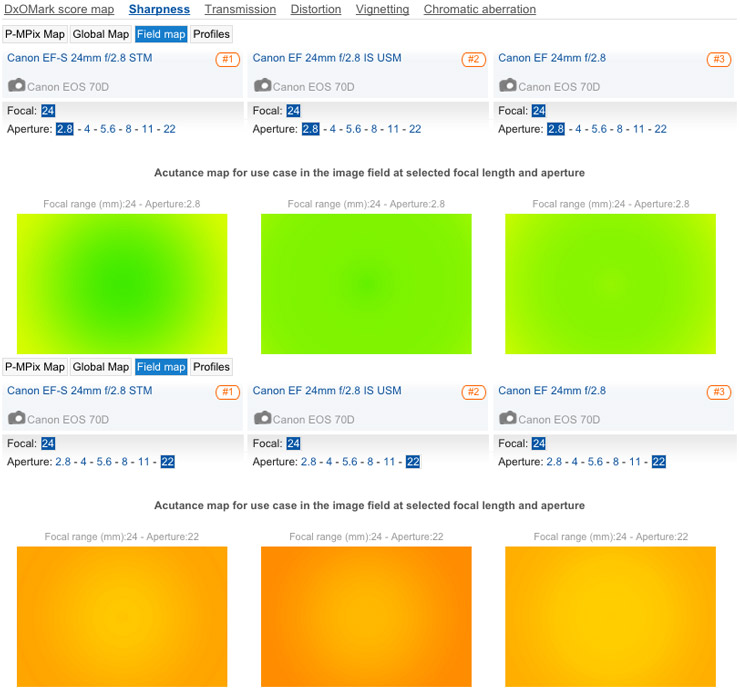
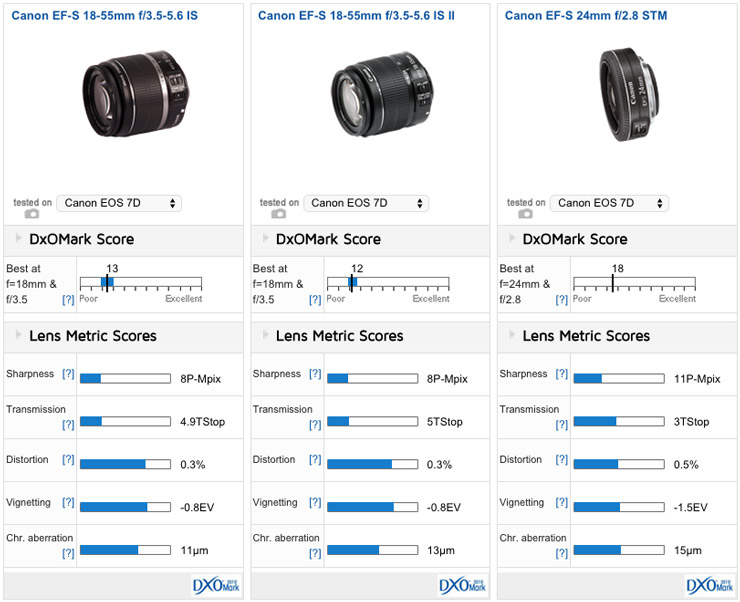

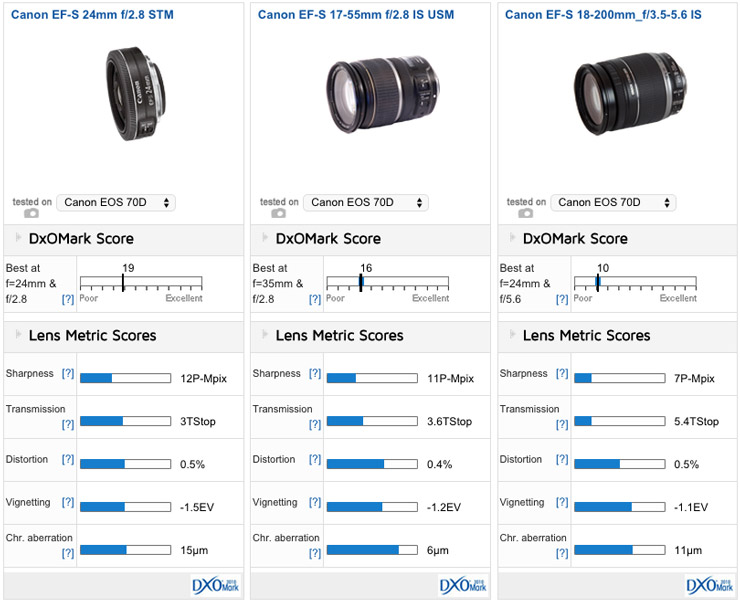
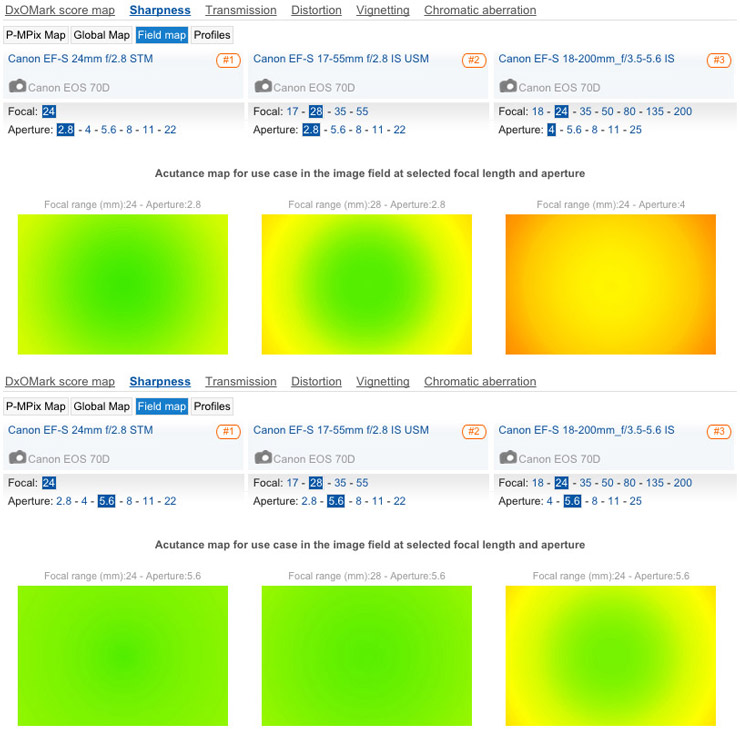
DXOMARK encourages its readers to share comments on the articles. To read or post comments, Disqus cookies are required. Change your Cookies Preferences and read more about our Comment Policy.